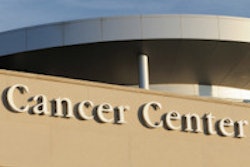
A new study confirms that post-treatment surveillance is a key factor in increasing survival rates in patients with head and neck squamous cell carcinoma (HNSCC).
The authors of the study in JAMA Otolaryngology -- Head & Neck Surgery (May 7, 2015) also cited patients' tobacco cessation, income level, and distance to medical centers as important components of their survival.
"Emphasizing to patients the importance of surveillance on survival and early detection of recurrence is crucial," noted study author Michael Deutschmann, MD, from the department of otolaryngology -- head and neck surgery at the University of Kansas Medical Center, and colleagues.
Methods
“Emphasizing to patients the importance of surveillance on survival and early detection of recurrence is crucial.”
The study included 332 patients with HNSCC who had completed both treatment and follow-up at the University of Kansas Medical Center from March 2003 to December 2008. Patients were followed for an average of 45 months.
The most common primary site involved was the oral cavity (124 patients, 37%), followed by the larynx (95 patients, 29%), and the oropharynx (94 patients, 28%). The majority of patients (74% or 246) had what the authors classified as "advanced disease." Most patients (213 or 64%) did not develop a recurrence during the time they were followed.
In the study, most of the patients were male (230 patients, 69%) and almost all the patients were white (306 patients, 92%). More than half (198) lived within 50 miles of the treatment center, while less than 10% (22 or 7%) lived more than 200 miles away. More than half (180) lived in middle income areas. Nearly half of the patients (163, 49%) did not miss any appointments. However, 101 patients (30%) were considered noncompliant, because they missed three or more appointments during the surveillance period.
| Initial treatments for HNCC patients | |
| Treatments | No. of patients |
| Surgery alone | 65 patients, 20% |
| Radiation therapy alone | 11 patients, 3% |
| Surgery plus radiation | 65 patients, 20% |
| Chemoradiation | 105 patients, 32% |
| Surgery plus chemoradiation | 86 patients, 26% |
Importance of follow-up
Post-treatment surveillance is a key component for patients with HNSCC, a cancer with a five-year survival rate that is only slightly greater than 50%. The National Comprehensive Cancer Network guidelines recommend follow-up visits at least every one to three months during the first year after treatment, every two to four months in the second year, every four to six months in the third to fifth years, and then annually.
But the ability to complete post-treatment surveillance may be influenced by several factors, the study authors found. Traveling more than 200 miles for follow-up medical appointments, continued smoking, and living in middle or moderate income areas were negative factors for patient survival, they concluded.
"Given that some patients had to travel more than 200 miles for follow-up, it is not surprising that some were unable to be fully compliant," the authors wrote. Patients who lived further from the treatment center may have elected to miss follow-up appointments owing to the distance, or they may have elected to receive follow-up closer to home, they noted.
More than half of the patients (192 patients, 68%) quit smoking, while about a third of them continued using tobacco products (90 patients, 32%).



















